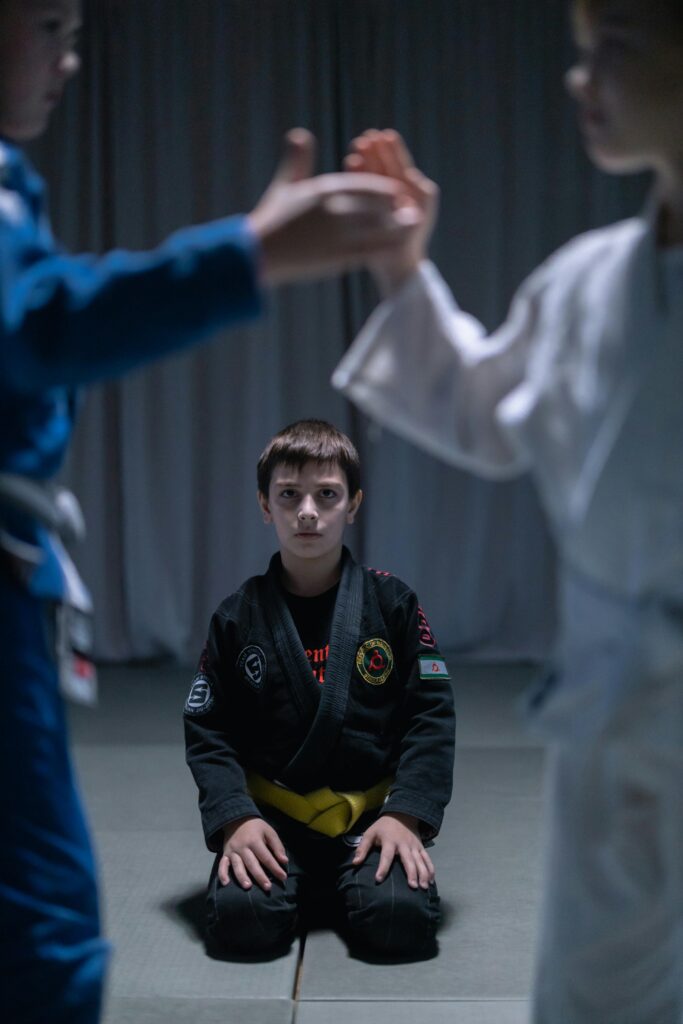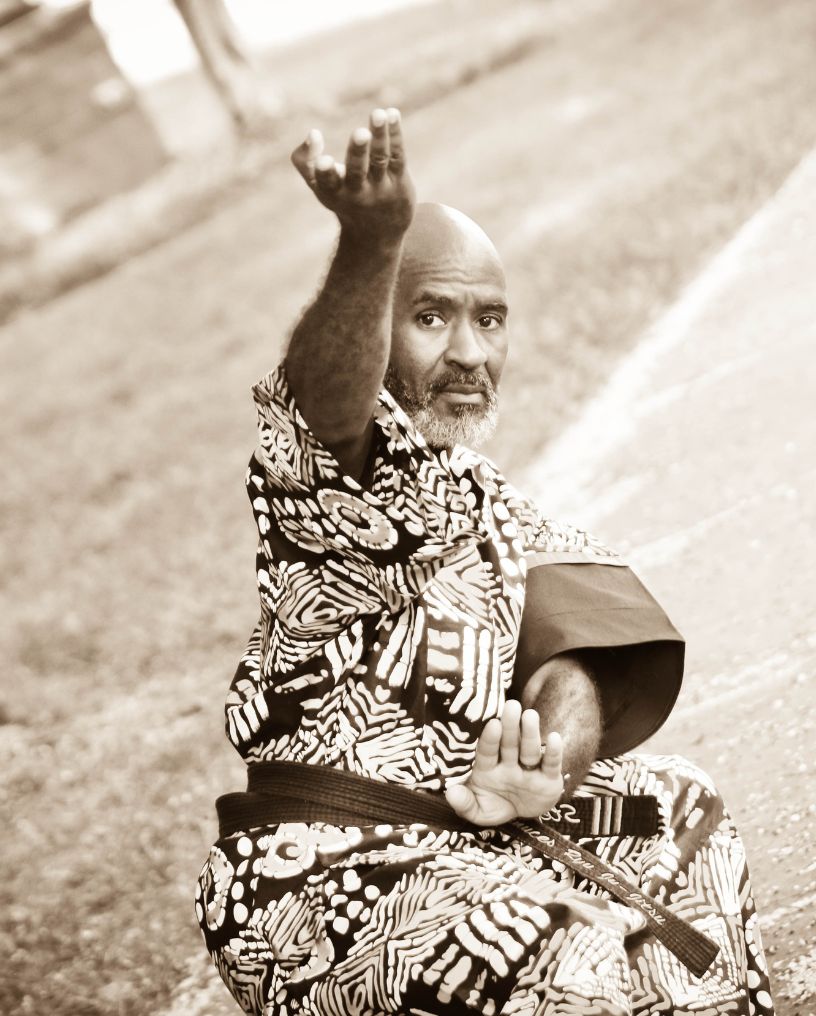Imagine you’re walking to your car, and someone approaches with a hammer, their intentions unmistakable. It’s a frightening moment, but knowing how to defend yourself from someone with a hammer can make all the difference.
Self-defense isn’t about being fearless—it’s about being prepared. With practical techniques and the right mindset, you can turn the odds in your favor, even in dangerous situations.
At Eye2Eye Combat, we focus on teaching real-life skills to help you stay calm and in control. Let’s explore the steps to defend yourself safely and effectively, starting with recognizing the danger.
Recognizing the Danger of a Hammer Attack
A hammer might seem like an everyday tool, but in the wrong hands, it can become a deadly weapon. Its compact design and heavy head allow for significant force, making it capable of inflicting severe injuries with just one swing.
Knowing this, you must take threats involving hammers seriously. Being aware of these risks and preparing yourself with practical self-defense techniques could be the difference between escaping unharmed and suffering unnecessary harm.
Assessing Threat Levels
The first step is recognizing danger. Pay close attention to someone’s body language and movements. If an individual grips a hammer tightly or adopts a stance suggesting aggression, these are warning signs.
The way they position themselves—leaning forward or making sudden movements—can indicate their intentions. Identifying these signals early gives you valuable time to prepare or create distance.
Staying Aware and Alert
Awareness is the cornerstone of self-defense. Scan your surroundings as you move, especially in unfamiliar or poorly lit areas. Look for potential escape routes or safe spaces where you can move if needed.
Note where others are nearby who could offer help. Most importantly, trust your instincts. If something feels off, don’t dismiss it—act on it by staying vigilant or moving to a safer location.
De-Escalating the Situation
When possible, try to calm the attacker before they act. Maintain a neutral tone and use simple phrases like, “I don’t want trouble.” Keep your hands visible and avoid any movements that could provoke aggression.
While de-escalation isn’t guaranteed to work, showing you’re not a threat can sometimes diffuse tension long enough for you to plan your next move.
Building a Foundation for Self-Defense
Effective self-defense doesn’t require years of training—it starts with the basics. Learning how to position your body, protect yourself, and respond to attacks can provide the confidence you need in tense situations.
Stance and Balance
Your stance is your foundation. Keep your feet shoulder-width apart, with one slightly in front of the other, and bend your knees slightly. This position keeps you steady and ready to move in any direction.
Avoid locking your knees or standing flat-footed, as this limits your ability to react quickly. Staying light on your feet allows you to shift your weight easily and stay balanced, even during sudden movements.
Blocking and Redirecting
Blocking is essential when dealing with a hammer strike. Use your arms to shield your head and torso, keeping them close to your body to minimize injury.
Instead of meeting the strike head-on, redirect the hammer’s momentum by angling your arms outward. This approach reduces the force of impact and creates opportunities to counter or escape.
Training for Quick Reactions
Fast reactions are critical in self-defense. Simple exercises like catching a ball or reacting to sudden hand movements can improve your reflexes. Over time, these drills train your body to respond automatically under stress.
Consistent practice not only sharpens your physical responses but also helps you stay composed during high-pressure situations.
Techniques to Safely Disarm an Attacker
Disarming someone with a hammer requires strategy and focus. Rather than trying to overpower the attacker, use calculated movements that take advantage of their actions.
Close-Range Defense Strategies
When the attacker is within reach, protecting yourself comes first. Raise your arms to shield your head and vital areas while stepping sideways to avoid direct strikes.
This positioning not only protects you but also puts you in a better spot to counter the attacker’s movements. Small, deliberate steps can create just enough space to assess your next move.
Practical Disarming Techniques
Disarming isn’t about wrestling the weapon away forcefully—it’s about targeting weaknesses. Focus on the attacker’s wrist or grip.
Techniques like wrist locks or joint controls, often taught in martial arts such as Aikido, can effectively neutralize the threat by forcing the attacker to release the hammer. These moves require practice, but they’re powerful tools when applied correctly.
Using Everyday Objects
Sometimes, the best defense is improvisation. Objects like a bag, a book, or even a jacket can serve as a barrier between you and the hammer.
Use these items to absorb or deflect the impact, giving you time to escape or counterattack. Regularly practicing how to use common items defensively can make these actions instinctive in a real confrontation.
Ground Defense
If the attack takes you to the ground, don’t panic. Instead, focus on protecting your head by tucking your chin and rolling away from the attacker. Use your legs to push them back or create space.
Techniques from Brazilian Jiu-Jitsu, such as shrimping or guard positioning, can help you regain control and create opportunities to escape. Ground defense emphasizes using leverage rather than strength, making it effective for individuals of all sizes.
After the Confrontation: Ensuring Safety and Reporting
Once the immediate threat has been neutralized, it’s crucial to shift your focus to securing yourself and involving the proper authorities.
While the physical danger may have passed, ensuring your safety doesn’t stop there. Taking the right steps afterward helps prevent further harm and ensures accountability.
Creating Distance
Your first move after disarming the attacker should be to put as much distance as possible between you and them.
Back away while keeping your eyes on them. This allows you to monitor their actions and ensures they can’t recover the hammer or attempt another attack.
If you can, position yourself near an exit or a more open area where you can quickly escape if necessary. Never turn your back until you are completely out of immediate danger.
Reporting the Incident
Call the police as soon as you’ve reached a safe location. When speaking with the authorities, provide clear and detailed information.
Mention the weapon they used, describe their appearance, and explain the actions you took to defend yourself. Be honest but stick to the facts—this helps law enforcement respond appropriately and builds a record of the incident.
If there are any witnesses, ask them to stay until the police arrive, as their accounts can further clarify what happened.
Recovery and Self-Care
Even if you come out physically unharmed, encounters like these can take a toll on your mental well-being. Don’t ignore the emotional impact of such a confrontation.
Speak with someone you trust, whether it’s a family member, a close friend, or a professional counselor. Processing the event is essential for your recovery and helps you rebuild confidence.
You might also consider practicing calming techniques, like deep breathing or meditation, to help manage any lingering anxiety.
Enhancing Skills Through Training
The most effective way to feel secure in situations like these is to invest in ongoing self-defense training. It’s not just about learning moves—it’s about building confidence, awareness, and the readiness to act decisively when needed.
Why Self-Defense Training Matters
Practical self-defense classes prepare you for real-world threats by teaching techniques tailored to various scenarios. From blocking a strike to neutralizing a weapon, these skills give you the tools to respond effectively.
Training also helps you understand how to use your body’s natural strengths, so you can protect yourself no matter your size or physical ability.
Building Muscle Memory
Repetition transforms basic knowledge into instinct. By practicing techniques consistently, your body learns to react without hesitation during high-pressure situations.
Whether it’s perfecting a block or a disarming move, muscle memory ensures your actions are swift and precise when seconds count. Set aside time for regular practice to make these movements second nature.
Realistic Drills
Scenario-based drills immerse you in situations that mimic real-life threats. Practicing with training weapons or under controlled stress conditions builds confidence and sharpens your ability to think clearly under pressure.
These exercises also allow you to test and refine your skills in a safe environment, making you better prepared for the unexpected.
A Prepared Mindset
Training isn’t only physical—it shapes the way you approach personal safety. A prepared mindset means staying alert to your surroundings, trusting your instincts, and maintaining a calm, focused demeanor even in challenging situations.
Regular practice reinforces this mindset, giving you the tools to stay vigilant and confident no matter what life throws your way.
Safety Starts with You—Train Smart
Every situation discussed here highlights one essential truth—being prepared is your best defense. Whether it’s avoiding an attack, neutralizing a threat, or recovering safely, the skills you practice can make all the difference.
At Eye2Eye Combat, we believe self-defense isn’t just about reacting; it’s about cultivating confidence and readiness in every area of life.
If you’re serious about protecting yourself and those you love, explore our private defense classes. These one-on-one sessions are tailored to your needs, offering personalized, hands-on training that prepares you for real-world situations.
Don’t wait for the unexpected—train now, act smart, and stay safe.
FAQs
What is the #1 rule of self-defense?
Stay aware and avoid confrontation whenever possible. Self-defense isn’t just about fighting back—it’s about recognizing danger early and keeping yourself safe. If you can avoid an unsafe situation entirely, that’s always the best move.
How do you defend yourself against someone?
Stay calm, create distance, and focus on protecting yourself. Use simple techniques to block or redirect their movements, and look for an opportunity to escape. If necessary, target vulnerable areas to neutralize the threat quickly and get to safety.
How effective is a hammer in a fight?
A hammer can be very dangerous due to its weight and force. It’s capable of causing severe injuries, especially if swung at close range. The key to defending against it is maintaining distance, staying mobile, and using techniques to redirect the attacker’s strikes.
What’s the best way to prepare for self-defense situations?
Regular training is essential. Practicing self-defense techniques builds muscle memory and boosts confidence. Whether you’re learning basic blocking, situational awareness, or advanced techniques, consistent practice ensures you’re ready to respond effectively in real-life scenarios.
Can I learn self-defense if I’m not physically strong?
Absolutely. Self-defense is about technique, strategy, and awareness—not brute strength. The right training teaches you how to use leverage, timing, and your natural movements to protect yourself. It’s accessible and effective for people of all sizes and fitness levels.





